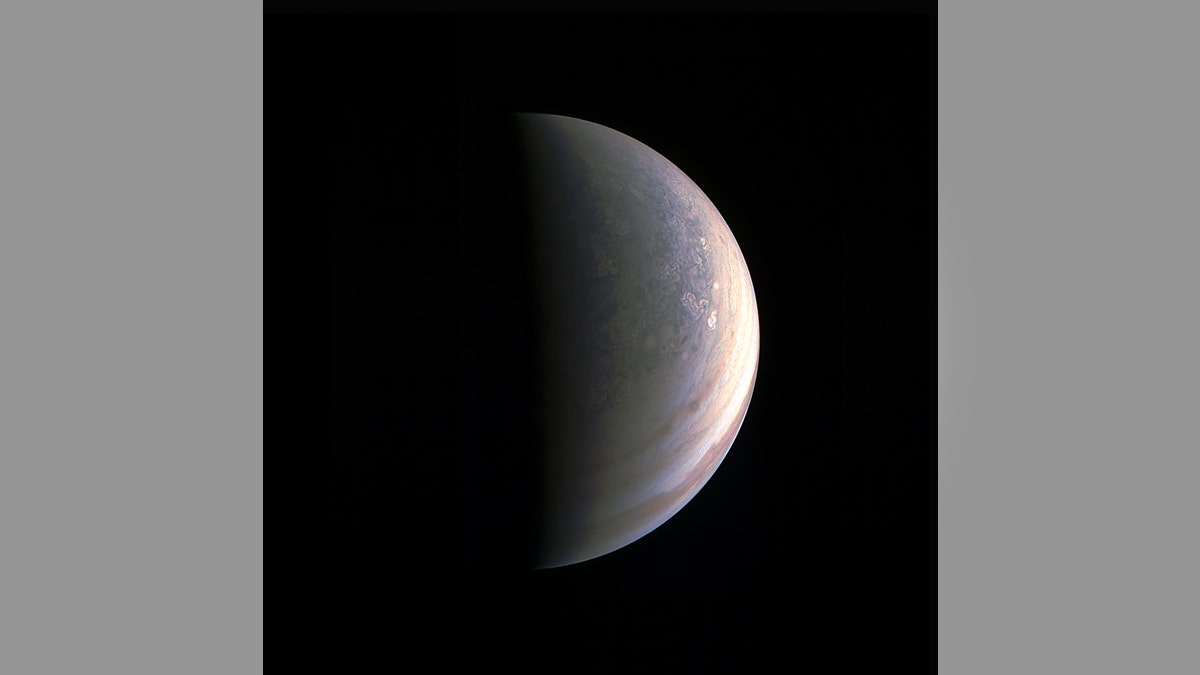
(NASA/JPL-Caltech/SwRI/MSSS)
Scientists have reported exciting new discoveries about Jupiter after NASA’s Juno spacecraft sent a trove of images of the planet taken during a trek from its north to south poles late last month. The images were released Friday.
The mission is the first flyby of its kind in a series intended to dig deeper into what makes Jupiter tick. Juno made the journey on Aug. 27 at a range of about 2,500 miles above the planet’s clouds. NASA wrote on its website that the JunoCam transmitted six megabytes of data from its six-hour journey.
The early results have produced fresh data on the planet that have scientists excited.
“It’s bluer in color up there than other parts of the planet, and there are a lot of storms,” said Scott Bolton, principal investigator of Juno from the Southwest Research Institute in San Antonio, in the press release. “There is no sign of the latitudinal bands or zone and belts that we are used to -- this image is hardly recognizable as Jupiter. We’re seeing signs that the clouds have shadows, possibly indicating that the clouds are at a higher altitude than other features.”
NASA added that in addition to photos, all eight of Juno’s science instruments collected data. Joining the mission was the Jovian Infrared Auroral Mapper (JIRAM), supplied by the Italian Space Agency. The JIRAM transmitted infrared images of the planet’s poles.
“These first infrared views of Jupiter’s north and south poles are revealing warm and hot spots that have never been seen before,” said Alberto Adriani, JIRAM co-investigator from Instituto di Astrofisica e Planetologia Spaziali, Rome. “And while we knew that the first-ever infrared views of Jupiter's south pole could reveal the planet's southern aurora, we were amazed to see it for the first time. “
The JIRAM is the first of its kind to see the southern aurora on Jupiter, according to Adriani.
In addition to new discoveries, the mission's Radio/Plasma Wave Experiment, known as Waves, also recorded “ghostly-sounding” transmissions from the planet. NASA wrote that although the sounds have been known about since the 1950s, this is the closest point they have been analyzed from.
“Waves detected the signature emissions of the energetic particles that generate the massive auroras which encircle Jupiter’s north pole,” said Bill Kurth, co-investigator for the Waves instrument at the University of Iowa, Iowa City. Kurth added that the emissions are, "the strongest in the solar system."
Juno launched on Aug. 5, 2011 and arrived at Jupiter on July 4, 2016. The recent flyby is one of over 30 planned excursions.




















